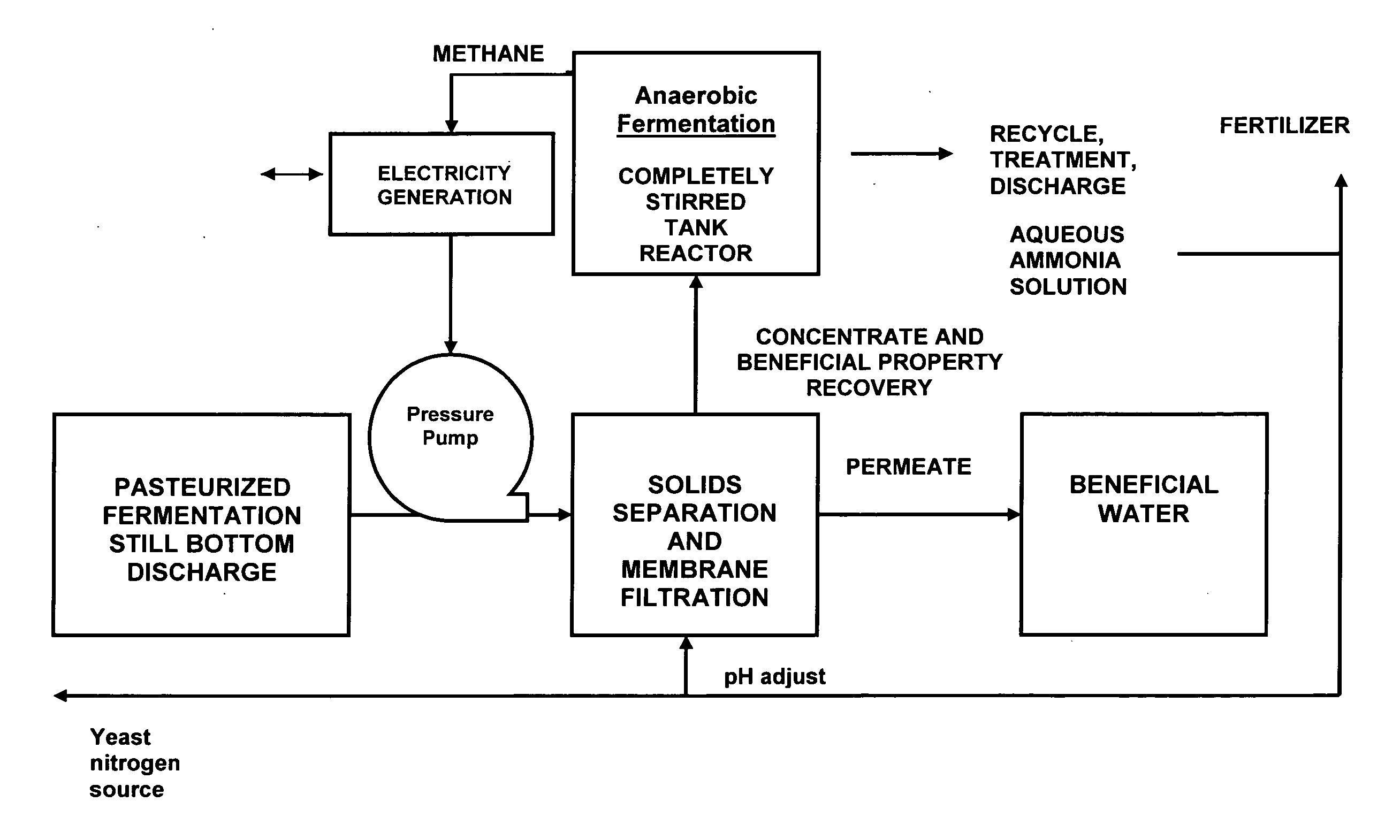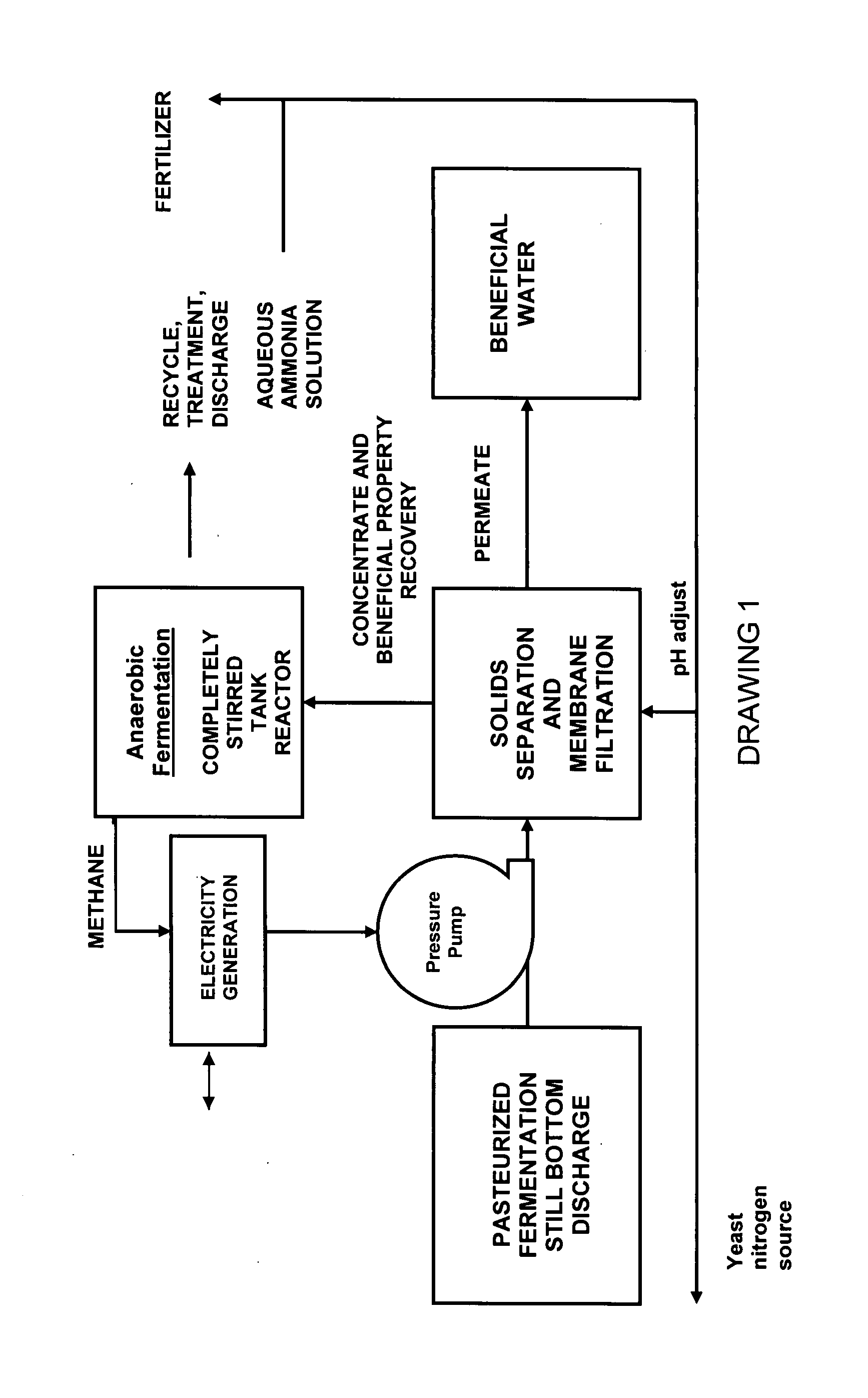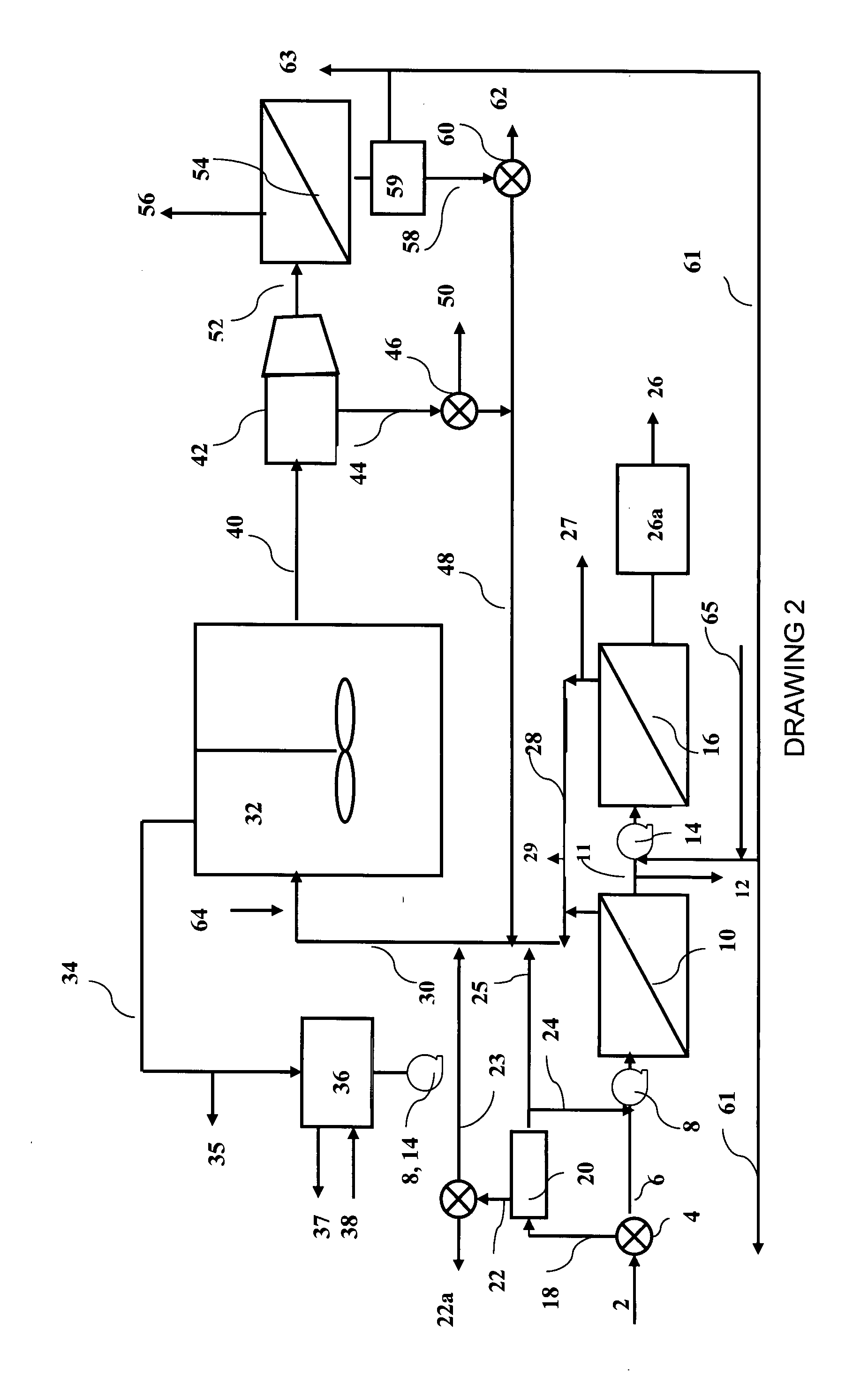By-products from fermentation still bottoms
a technology of by-products and fermentation still bottoms, which is applied in the direction of biological water/sewage treatment, waste based fuel, treatment water, etc., can solve the problems of not meeting the combined conditions necessary to separate fermentation still bottoms, not recovering solids for methane gas production, and discharged to sewers from ultrafiltration, etc., to achieve reliable, safe and appealing for human consumption, and improve the effect of water produ
- Summary
- Abstract
- Description
- Claims
- Application Information
AI Technical Summary
Benefits of technology
Problems solved by technology
Method used
Image
Examples
Embodiment Construction
—DRAWING 1,2 AND 3—PREFERRED EMBODIMENTS
[0039] Referring now to the drawings there is shown a conceptual diagram of the preferred embodiment of the process and system Drawing 1 for still bottom treatment to recover fuel and beneficial water in accordance with the present invention and a specific schematic diagram Drawing 2 of the method. Drawing 3 illustrates methods to process and recover beneficial by-products from the solid stream.
[0040] As shown a discharge stream 2 of still bottom issues from an alcohol distillation facility at temperatures greater than 70 C and less than 100 C constituting a pasteurized state. The stillage can be conveyed through appropriate piping or transported and though not necessarily captured within this temperature range, the still bottoms should be maintained sanitary and preserve the characteristics of the spent yeast cells and cell parts, metabolites, fermentation byproducts, and non- fermentable starch and sugar feedstock residues without biologica...
PUM
 Login to View More
Login to View More Abstract
Description
Claims
Application Information
 Login to View More
Login to View More - R&D
- Intellectual Property
- Life Sciences
- Materials
- Tech Scout
- Unparalleled Data Quality
- Higher Quality Content
- 60% Fewer Hallucinations
Browse by: Latest US Patents, China's latest patents, Technical Efficacy Thesaurus, Application Domain, Technology Topic, Popular Technical Reports.
© 2025 PatSnap. All rights reserved.Legal|Privacy policy|Modern Slavery Act Transparency Statement|Sitemap|About US| Contact US: help@patsnap.com



